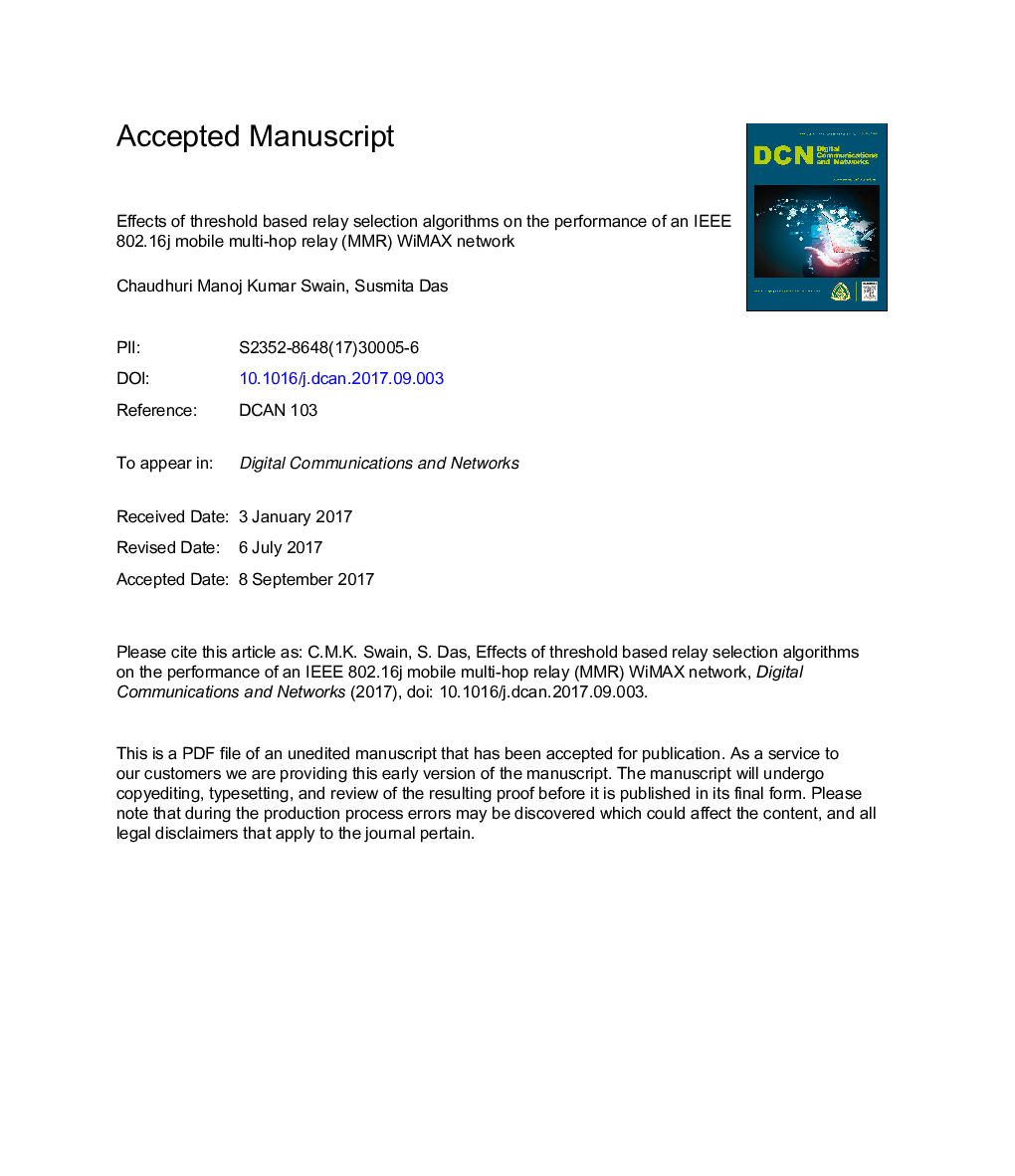| Article ID | Journal | Published Year | Pages | File Type |
|---|---|---|---|---|
| 7111743 | Digital Communications and Networks | 2018 | 32 Pages |
Abstract
IEEE 802.16j MMR WiMAX network introduces multi-hop relay architecture, which involves cooperative relay stations focusing on increasing the network throughput and coverage. Relay selection algorithms can be used to choose the optimal relay, which help in reducing the computational complexity during the signal processing operation of the wireless network. In this research work, a conventional Amplify-Forward (AF)/Decode-Forward (DF) assisted multi-relay IEEE 802.16j WiMAX network is considered. The effects of relay selection algorithms on the performance metrics such as Symbol Error Rate (SER) and channel capacity are investigated in detail through simulation-based study. Further, the performance of this network utilizing the proposed relay selection algorithms, namely threshold based max_min and threshold based harmonic mean of SNR, are compared with the existing max_min and harmonic mean of SNR based algorithms. Standard diversity combining techniques such as Maximal Ratio Combining (MRC) and Selection Combining (SC) are used for combining the transmitted signal at the receiver. In addition, the impact of relay locations on the performance metrics are explored. It is observed that both the proposed threshold based max_min and threshold based harmonic mean of SNR based relay selection algorithms outperform the max_min and harmonic mean of SNR based algorithms, as both the SER and channel capacity for the considered multi-relay WiMAX network is improved significantly. Further, this extensive study and analysis will be beneficial for the design of MMR WiMAX networks.
Keywords
Related Topics
Physical Sciences and Engineering
Engineering
Control and Systems Engineering
Authors
Chaudhuri Manoj Kumar Swain, Susmita Das,
